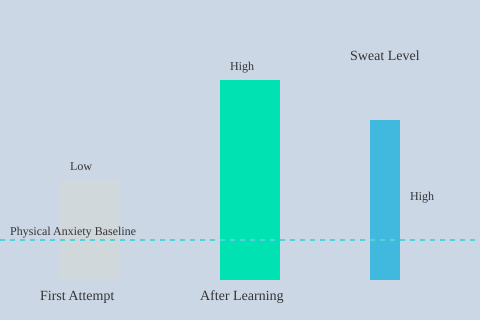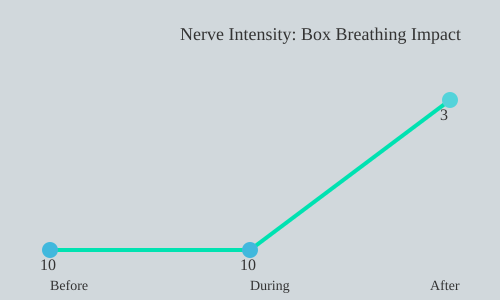Picture this: black shirt, black pants, puddles of sweat—and the sinking dread of realizing you’ve just bombed your first big talk. Sound familiar? You’re not alone. My earliest attempt at public speaking was so nerve-wracking that even the CEO’s handshake felt like a judgment. But that crash-and-burn moment turned into a goldmine of hard-earned lessons. Forget stiff advice—I’m here to share real, slightly embarrassing truths and genuinely useful strategies (including how I learned to sweat less and speak more). Hang on, because we’re diving headfirst into the imperfect, hilarious, and ultimately pretty liberating world of overcoming public speaking nerves.
Section 1: The First Bomb—Why Failing Miserably Matters (More Than You Think)
If you’ve ever felt your heart pounding before stepping onto a stage, you’re not alone. Public Speaking is one of those things that can turn even the most confident person into a bundle of nerves. Let’s be honest—your first experience with Presentation Anxiety is rarely smooth. In fact, it’s often downright embarrassing. But here’s the thing: that first bomb, that epic fail, is far more valuable than you might think.
My Sydney Meltdown: The Sweaty Truth
Let me take you back to Sydney, New South Wales. My first real speaking gig was for a building association. I was buzzing with excitement, but inside, I was a mess. I knew I’d be nervous, so I tried to outsmart my own body. I wore a black shirt and black pants, hoping to hide any sweat stains. Smart, right? Turns out, nerves don’t care about your wardrobe choices. I was sweating here, there—honestly, places I didn’t even know could sweat were joining the party. It was like my body had discovered new physics just for the occasion.
Despite the rivers of sweat, I powered through the presentation. I told myself it went okay, but deep down, I knew it was rough. As I walked off stage, the CEO was waiting for me. He shook my hand, looked me dead in the eye, and asked,
‘Vin, have you, have you done this before?’
Ouch. That stung. But it was also the moment I realized something important: Recognizing your nerves is the first step toward Managing Anxiety.
Why Your Worst Moment Is a Gift
It’s easy to beat yourself up after a public speaking disaster. But research shows that acknowledging and accepting anxiety can help you manage it more effectively. That first bomb is actually a gift. Here’s why:
- It sets the stage for growth. You can’t improve if you don’t know what needs fixing. That embarrassing moment shines a light on your triggers—maybe it’s the crowd size, the topic, or just the fear of being judged.
- Sweating (everywhere!) is normal. You’re not broken. It’s just physics and nerves. Studies indicate that physical symptoms like sweating, shaky hands, or a racing heart are common signs of Speech Anxiety. The key is to notice them, not fight them.
- It helps you spot your anxiety triggers. For me, it was the anticipation, the pressure to impress, and the fear of looking incompetent. Once you know your triggers, you can start to address them—whether through preparation, breathing techniques, or positive affirmations.
- Laughter builds resilience. Learning to laugh at your own mishaps is powerful. It defuses self-judgment and helps you bounce back faster. When you can see the humor in your sweaty, shaky debut, you’re already on the path to confidence.
What Research Says About Managing Anxiety
Studies on Presentation Anxiety suggest that a mindset shift is crucial. Instead of trying to eliminate nerves, accept them as part of the process. Preparation is key—knowing your material and practicing can reduce anxiety. Breathing techniques, like deep rhythmic breaths, help calm your body. And don’t underestimate the power of positive self-talk. Remind yourself: everyone starts somewhere.
Performance vs. Anxiety: The Learning Curve

Remember, bombing on stage isn’t the end—it’s the beginning. Your worst public speaking moment can be the foundation for all the confidence you’ll build in the future.

Section 2: Calming the Volcano—How to Physically Control Nerves Before You Speak
If you’ve ever felt your voice tremble during a presentation, you’re not alone. Most people think the problem starts with their voice, but the real culprit is your body. When your body tenses up, your voice follows. Understanding this connection is the first step toward mastering body language control and managing anxiety before you step on stage.
Try the Tense-Hand Test
Let’s start with a simple experiment. Hold your hand out in front of you. If you’re relaxed, your hand stays steady. Now, tense your hand as hard as you can. Notice the difference? Your hand starts to shake. This is a physical reaction—your muscles are tight, and the tension creates visible shaking. The same thing happens to your whole body when you’re nervous. That tension doesn’t just stay in your hand; it spreads everywhere, including your voice. Suddenly, your words sound shaky, even if your mind is clear.
Why Physical Control Matters for Presentation Techniques
Your body is the foundation of your presentation techniques. If you can control your physical state, you can control your delivery. Research shows that deep, rhythmic breathing techniques can help manage anxiety by slowing your heart rate and providing more oxygen to your brain. This isn’t just theory—military professionals rely on these methods in high-stress situations.
‘Navy SEALs do this. The military use this all the time.’
Box Breathing: The Navy SEAL-Approved Nerves-Destroyer
One of the most effective ways to calm your body is box breathing. It’s simple, discreet, and you can do it anywhere—even backstage or right before you speak. Here’s how it works:
- Inhale for 4 counts
- Hold your breath for 4 counts
- Exhale for 4 counts
- Hold again for 4 counts
Repeat this cycle a few times. You’ll notice your heart rate slows, your muscles relax, and your mind clears. It’s a tactical fix for nerves that’s been battle-tested by the world’s most elite teams.
Practice Makes Stealth Mode Possible
Here’s a pro tip: Don’t wait until you’re on stage to try box breathing. Practice it at home, in the car, or even while waiting in line. The more you practice, the more automatic it becomes. Eventually, you’ll be able to use this breathing technique in “stealth mode”—no one will even notice you’re doing it. This is a game-changer for managing anxiety in high-pressure moments.
Relaxed Body, Steady Voice
A relaxed body leads to a steady voice. Your audience may not see your hands shaking, but they’ll hear it in your voice if you’re tense. That’s why body language control is so critical. By focusing on your breath and consciously relaxing your muscles, you send a signal to your brain that you’re safe and in control. This helps you project confidence, even if you’re feeling nervous inside.
Visualizing the Impact: Nerve Intensity Before and After Box Breathing
To illustrate how effective box breathing can be, here’s a simple chart showing the drop in perceived nerve intensity before and after a round of box breathing (on a scale of 1-10):

By integrating these breathing techniques into your preparation, you’re not just calming your nerves—you’re building a foundation for confident, controlled public speaking.

Section 3: Mindset Acrobatics—Tricking Your Brain Into Loving the Spotlight
When you step onto a stage or stand up to speak, your mind can feel like it’s running a marathon. The spotlight seems to magnify every doubt and amplify every shaky breath. But what if you could flip the script? What if you could trick your brain into not just surviving, but actually loving the spotlight? This is where a powerful mindset shift comes in—a subtle but game-changing approach to overcoming nerves and building real confidence.
Adopt a Service Mindset: It’s About the Audience, Not You
Here’s the truth: The more you focus on yourself, the more your anxiety grows. Research shows that self-focused thinking—worrying about how you look, sound, or perform—ramps up stress and makes your nerves worse. It’s a classic trap. But you can escape it by adopting a service mindset.
Instead of thinking, “What if I mess up?” or “What will they think of me?”, try asking, “How can I help these folks?” This simple question shifts your attention outward. Suddenly, you’re not the star of the show—the audience is. You’re there to serve, to inform, to inspire, or maybe just to make someone’s day a little better. This is more than just feel-good advice; it’s a tactical move for anxiety management.
“It’s not about me. It’s not about me.”
Repeating this phrase to yourself can be surprisingly powerful. It’s a reminder that your job is to connect, not to impress. When you make the audience your focus, you naturally become less self-conscious. Studies indicate that this outward focus lowers nervousness and helps you build a genuine connection with listeners.
Obsessing Over Yourself Ramps Up Anxiety—Focus Outward to Shrink Stress
It’s easy to get caught in a loop of self-criticism before and during a presentation. You might notice your hands shaking or your voice trembling and immediately think, “Everyone can see I’m nervous.” But here’s a secret: most people are too busy thinking about themselves to notice your nerves.
Research supports that focusing on your audience—what they need, what they care about—can actually decrease anxiety. This isn’t just a psychological trick; it’s a practical strategy for confidence building. When you’re genuinely interested in helping others, your brain has less bandwidth to dwell on your own fears.
Audience-Centered Thinking: The Practical Shift
So, how do you make this shift in real time? Start with a few practical steps:
- Prepare with Purpose: Before your talk, jot down what your audience hopes to learn or feel. Keep this list handy as a reminder.
- Use Positive Affirmations: Research shows that repeating affirmations like “I am here to help” or “My message matters” can challenge negative thoughts and boost your confidence.
- Practice Mindful Breathing: Techniques like box breathing not only relax your body but also help you refocus on your purpose.
- Make Eye Contact: Connecting with individuals in the audience can ground you and reinforce the idea that you’re having a conversation, not performing a solo act.
Every time you catch yourself worrying about your own performance, gently redirect your attention. Ask yourself, “What does this audience need right now?” or “How can I make this moment valuable for them?” This shift isn’t always easy, especially in high-stakes situations, but with practice, it becomes second nature.
Remember, overcoming nerves and anxiety management aren’t about eliminating fear—they’re about managing it. By focusing on service and connection, you’ll find that the spotlight doesn’t have to be something you dread. In fact, it might just become a place where you thrive.

Section 4: Getting Out of the Doom Loop—Tools for In-the-Moment Rescue
If you’ve ever felt your heart pounding and your voice trembling during high-stakes presentations, you’re not alone. The “doom loop” of public speaking anxiety is real—and it’s sneaky. One moment you’re fine, the next your mind is racing, your words are tumbling out way too fast, and you’re desperate for it all to be over. But here’s the thing: you can break that cycle, right in the moment, with a few unconventional but research-backed presentation techniques.
Recognizing the Doom Loop: Fast Speech and Anxiety
Let’s start with the basics. When anxiety spikes, your body’s natural reaction is to speed everything up. You talk faster. You breathe faster. You might even feel like you’re sprinting through your speech just to reach the finish line. But research shows that this rapid-fire delivery is both a symptom and a reinforcer of nerves.
“The faster you speak, the more you’re communicating to your mind that you are nervous.”
It’s a vicious cycle: the faster you talk, the more your brain freaks out—and the more your brain freaks out, the faster you talk. This is the doom loop in action. Breaking it requires a conscious shift in how you approach your speech, especially when the pressure’s on.
Slow Speech: The Counterintuitive Rescue Tool
Here’s the magic trick: slow down your speech. It sounds almost too simple, but it’s incredibly effective. When you pause, take a deep breath, and deliberately slow your words, you send a powerful signal to your brain and body that you’re in control. This isn’t just about sounding calm—it’s about actually calming your nervous system.
- Pause: When you feel your heart racing, stop for a moment. Let the silence settle.
- Breathe: Take a slow, deep breath. This helps lower your heart rate and gives your brain a moment to reset.
- Slow Down: Speak at a pace that feels almost too slow. Trust that it won’t sound awkward to your audience—in fact, it will make you sound more confident and authoritative.
Studies indicate that slowing your speech rate can dramatically reduce anxiety and help you regain composure during high-stakes presentations. It’s a small change with big impact.
Managing Adrenaline: Physical Techniques for Anxiety Management
Another culprit in the doom loop is adrenaline. Your body releases it when you’re nervous, preparing you for “fight or flight.” But you don’t need to sprint or wrestle a bear—you just need to give a speech. So, what do you do with all that excess energy?
- Quick Exercise: Before you step on stage, try a brisk walk down the hallway, a few pushups, or even some deep muscle stretching. These physical relaxation techniques help metabolize adrenaline and reduce shaky hands or a quivering voice.
- Stretching: Gentle stretching can release tension and help you feel more grounded.
- Deliberate Pausing: Build intentional pauses into your presentation. Not only does this calm your body and mind, but it also gives your audience time to absorb your message.
Physical relaxation isn’t just a nice-to-have—it’s a proven anxiety management strategy for high-stakes presentations. Even if you feel a bit odd doing jumping jacks in your suit, the payoff is worth it.
Table: Tools for Breaking the Doom Loop
| Technique | Effect |
|---|---|
| Slow Down Speech | Reduces anxiety; recommended rate is much lower than anxious default |
| Quick Exercise | Burns off excess adrenaline before speaking |
| Deep Breathing | Slows heart rate, calms mind |
| Deliberate Pausing | Breaks nervous speech cycle, increases audience engagement |
Remember, the goal isn’t to eliminate nerves entirely—it’s to manage them. By using these unconventional presentation techniques, you can step out of the doom loop and own the stage, even when anxiety tries to take the wheel.
Section 5: Building Fear Immunity—How to (Literally) Practice Bravery by Making Toasts at Dinner
If you’ve ever felt your heart race at the mere thought of speaking in public—even if it’s just a handful of colleagues on a Zoom call—you’re not alone. Speech anxiety is a universal experience, but the good news is, you can train your brain to handle it better. The secret? Start small, and practice in the places you least expect. Confidence building doesn’t have to begin on a big stage; it can start at your own dinner table.
Let’s break down a practical, step-by-step approach that borrows from exposure therapy—a proven method for tackling fears. The idea is simple: you gradually expose yourself to what makes you nervous, in safe, low-stakes situations. Over time, your brain learns that the “threat” isn’t as big as it seems. This process is called desensitization, and it’s surprisingly effective for public speaking fears.
| Level | Challenge | Peer Group Size |
|---|---|---|
| 1 | Toast at dinner (seated) | 2-3 friends |
| 2 | Toast at dinner (standing) | 2-3 friends |
| 3 | Stand while speaking on Zoom | Small work meetings |
Here’s how you can put this into action:
First, recognize your trigger. Maybe it’s the moment you realize all eyes are on you, or that awkward silence before you start speaking. By labeling what makes you nervous, you’re already taking the first step to managing it. Research shows that simply acknowledging anxiety can help reduce its power over you.
Next, try making a toast at your next dinner with friends. It doesn’t have to be elaborate—just a quick, thirty-second speech about friendship or gratitude. You’ll probably feel a flutter of nerves, even with people you know well. That’s normal. The point is to get used to the sensation in a safe environment.
Ready to level up? The next time you’re out with friends, stand up to make your toast. Yes, it might feel a bit odd, but as the saying goes, “It only feels awkward if you make it awkward—embrace the weirdness!” Standing while speaking changes the dynamic, making it feel more like a real presentation. This is a gentle way to simulate higher-pressure situations without any real risk.
For the final step, take this practice into your professional life. During your next virtual presentation or team meeting, stand up while you speak. You can casually mention, “I’ve been sitting all day, do you mind if I stand for this?” Standing up, even on a Zoom call, helps you project your voice and energy, and it tricks your brain into feeling like you’re presenting to a larger group. This is a fantastic way to build confidence for virtual presentations, which are now a staple in most workplaces.
As you repeat these exercises, you’ll notice that your anxiety starts to fade. As one expert put it,
“The more you do it, the more you’ll desensitize that fear.”
Each small victory makes the next challenge feel less intimidating. Over time, these incremental steps can make confidence contagious—not just for you, but for those around you.
If you want to accelerate your progress, consider joining a group like Toastmasters. Research indicates that peer support and regular practice in a structured setting can dramatically improve your public speaking skills. Plus, you’ll be surrounded by others who understand exactly what you’re going through.
In the end, building fear immunity isn’t about eliminating nerves altogether. It’s about learning to manage them, one small, brave step at a time. So, the next time you’re at dinner, raise your glass and make a toast. You might just surprise yourself—and inspire others to do the same.
TL;DR: Public speaking flops happen, but learning how to control your body, shift your focus, and face your fears (even if it means making toasts at dinner) can turn anxiety into a secret superpower. Try box breathing, slow down, get moving, and never be afraid to stand tall—literally.
Hats off to Vinh Giang for the enlightening content! Take a look here: https://www.youtube.com/watch?v=Edg54WnYqkE.







